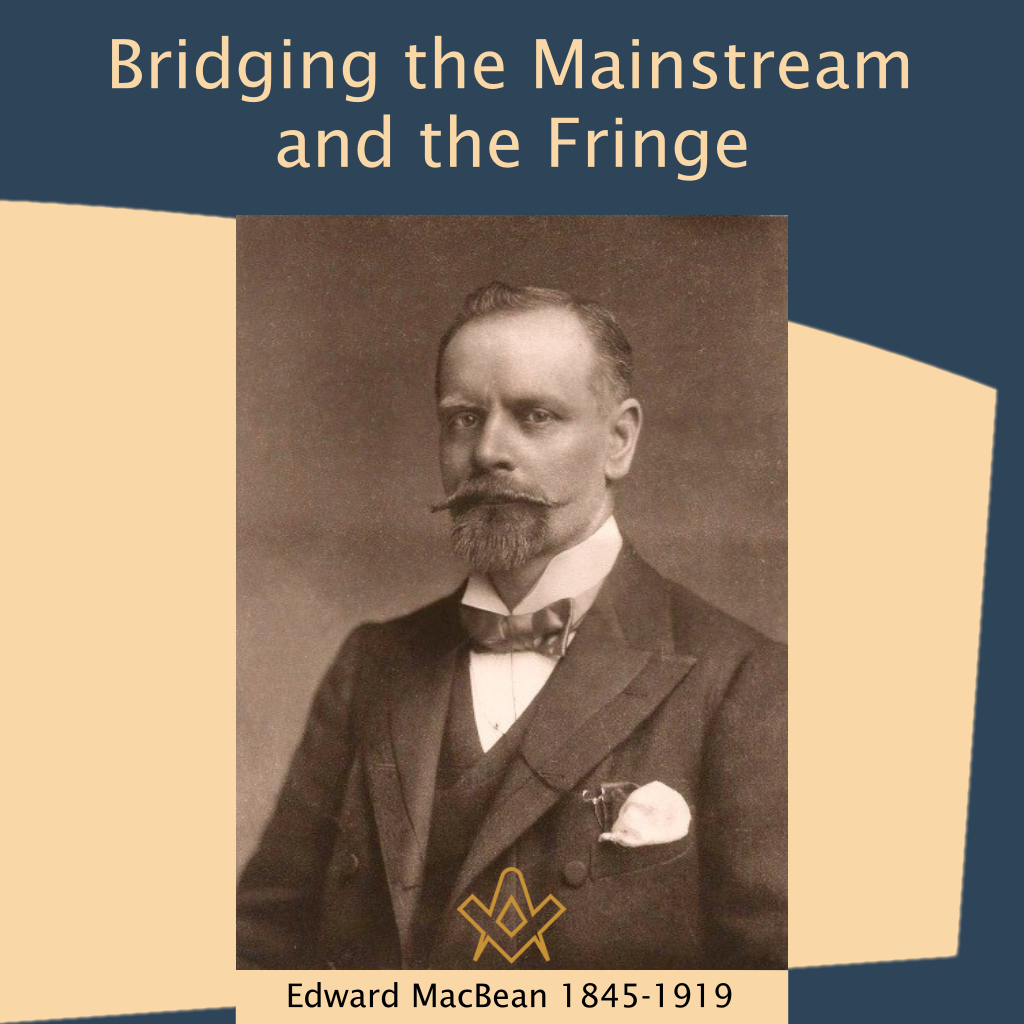Edward MacBean is another of those 19th century Scottish Freemasons, who whilst heavily involved in mainstream Freemasonry, and very much part of its hierarchical structure within that country, was also interested in searching and navigating the mysterious highways and byways of what the late Masonic historian Ellic Howe first termed ‘Fringe’ Masonry.
MacBean was very keen to obtain further enlightenment that such non-Masonic, or quasi-Masonic societies and Orders were capable of providing. As we will learn though, like his other adventurous peers, he did not always enjoy complete fulfilment.
Edward MacBean was born in America in 1845 to the Reverend John Macbean and his wife Elizabeth Hilder or MacBean. John MacBean was originally from Nairn, Scotland, but at the time of Edward’s birth he was Minister at Tabuintac and Burnt Church, New Brunswick, Canada.
John’s Ministry took him and his family throughout the world, and it was some time before young Edward was able to put down roots of his own. [1]
In around 1875 he settled down to a business career in Glasgow, and eventually built a successful rubber manufacturing business in the city.
On 20 November 1883, at the age of 39 years, he was initiated into Freemasonry in St. John’s Lodge, No. 3 bis, and passed and raised on the same day on 8 January 1884.
This was the start of a very successful Masonic career. He was also a member of The Lodge of Edinburgh (Mary’s Chapel) No. 1, Edinburgh, and in 1885 he was exalted into Glasgow Royal Arch Chapter No. 50.
He held a number of honorary memberships and was a Grand Steward in the Grand Lodge of Scotland.
Following a term as First-Principal in his Mother Chapter he became a founding member of King Solomon’s Chapter No. 2029 under the English constitution and was a Past Grand Chancellor in the Supreme Grand Royal Arch Chapter of Scotland.
One of his proudest moments was when he was made Grand Representative of the Grand Chapter of Maine in the United States of America near the Grand Chapter of Scotland.
The Freemason magazine of 7 January 1893, carried an interesting item concerning MacBean’s career in Royal Arch Masonry:
At the Supreme Grand Royal Arch Chapter of Scotland, held on December 21st, it was resolved, “That the words Depute Provincial Grand Superintendent be added to rule 67…etc.” There is no such officer appointed in England in Provincial Grand Chapters, though the office of Deputy Provincial Grand Master has long been in use.
We are very pleased to report that one of the first- if not the first- to be appointed under this new rule is our Excellent Companion, Edward MacBean, Grand Chancellor of Scotland, as Depute Provincial Grand Superintendent of the Lower Ward of Lanarkshire (Glasgow).
The choice thus made by Most Excellent Companion, Major Allan, Provincial Grand Superintendent, is a very good one, for Companion MacBean did good service as M.E.Z., of No. 50, Glasgow, and as Provincial Grand Treasurer, besides delivering lectures on Masonic subjects of importance.
We understand Companion MacBean will be installed either at the next official visitation-probably to his own chapter- or at the next meeting of the Provincial Grand Chapter.
We tender our esteemed brother the hearty congratulations of his many English friends and companions. [2]
MacBean was obviously a very thoughtful Freemason and wrote a number of Masonic essays and papers, including: – ‘Symbolism, Egyptian Mysteries’ and kindred subjects’; ‘Notes on the history of Craft Freemasonry’; and ‘Notes on Craft Ceremonial’.
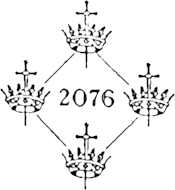
In May 1887, he became one of the first members of the Correspondence Circle (Q.C.C.C.) of the Quatuor Coronati Lodge of Research No, 2076, London, which had only been formed in February of that year.
Only a year later, on 4 May 1888, he was promoted to full membership of the Lodge, having been proposed for the same by one of the Lodge’s most noted members, Brother G.W. Speth.
He was appointed a Steward by the then Master Brother W. Simpson, of whom he had great admiration and respect.
MacBean rose through the ranks to become Master of the Lodge himself, and in his inaugural address spoke of his indebtedness to the aforementioned Brothers, and others; including the famous Masonic writer William James Hughan.
He contributed greatly to the earliest Transactions of the Lodge and the papers he read before the Lodge were: –
‘Scottish Freemasonry in the Present Era’,
‘The Formation of the Grand Lodge of Scotland’, and;
‘Master Masons to the Crown of Scotland’. [3]
Despite his senior and heavy involvement in mainstream Freemasonry, MacBean was also of an esoteric bent, and was undoubtedly one of Scotland’s ‘Fringe’ Masons.
He was a member of the Masonic Rosicrucian societies in both Scotland and England and took a full part in their activities and discussions; as the minute of a meeting of the Metropolitan College in London highlights.
At their meeting of 10 January 1889 MacBean read a paper concerning Arthur Edward Waite’s book: The Real History of the Rosicrucians; a book which had apparently caused much offence to the Societas Rosicruciana in Anglia (SRIA) and there was talk of suing Waite.
The members present generally felt that MacBean’s critique of Waite’s book was fair. [4]
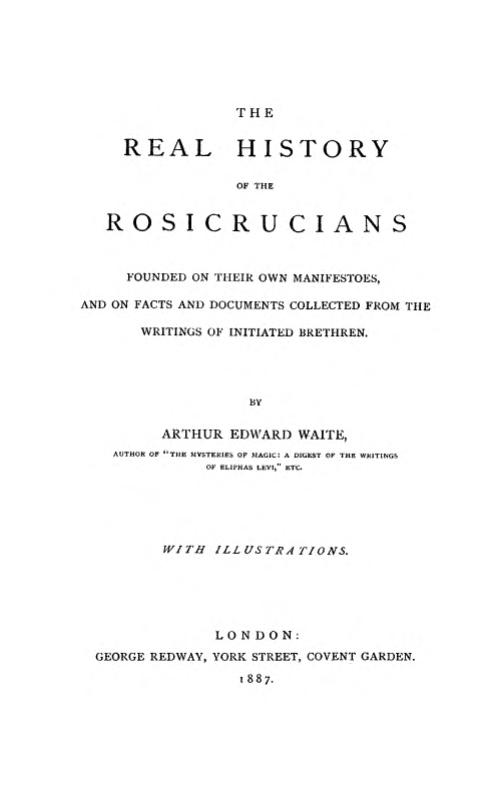
Frontispiece of The Real History of the Rosicrucians, A. E. Waite, 1887
In May 1888, he joined the Isis-Urania Temple of the Hermetic Order of the Golden Dawn in London, adopting the Latin motto Tollam Velum (I shall lift the veil).
He was number 22 on the members roll, and his address was given as 97, Hill Street, Garnet Hill in Glasgow.
It will be noted that this was the same month that he had obtained full membership of the Research Lodge in London, and it is highly likely that both events occurred around the same time and had a common denominator.
We do know that many of the early members of the Research Lodge were also members of the Golden Dawn, chief among them William Wynn Westcott who had joined the Lodge on 2 December 1886.

Golden Dawn Lamen By Fuzzypeg – Created by Fuzzypeg using Inkscape, Public Domain
MacBean achieved grade 2=9 within the Golden Dawn, but it would appear that he grew dissatisfied with the Order.
Evidence of this is contained within a letter another notable Scottish Freemason and member of the Golden Dawn wrote in 1898.
In January of that year, William Sutherland Hunter wrote to English occultist Frederick Leigh Gardner regarding a variety of occult matters. He informed Gardner:
The Edinburgh Temple have ignored us completely, and from what I hear of them I am not sorry.
Of course, I am alone in Glasgow now and hear nothing of what is transpiring anywhere. Edward Macbean has resigned GD (Golden Dawn). He was 2=9. [5]
I wish there was an Order where there was no jealousy and heartburning among the members, but apparently, this does not exist in this mundane sphere. [6]
It can only be assumed from this that MacBean withdrew from the Golden Dawn for similar reasons as those articulated by William Hunter.
The Golden Dawn is noted as an organisation which has been riven by argument and schism over the years.
MacBean was a member of the Ancient and Primitive Rite of Memphis Misraim, founded in the United Kingdom by famous esoteric practitioner John Yarker; and MacBean was head of the Rite in Scotland.
Evidence of this is to be found in the Archives of the Library and Museum of Freemasonry in London, where there are several copies of ritual pertaining to that Rite.
One example is the ritual of ‘Discreet Master’ described as the ‘first Degree of the Chapter and Fourth Degree of Antient and Primitive Masonry’.
On the upper inside cover of one binding is an inscription which reads:
‘Edward MacBean, 33.95.90 (Degrees) G.M. (Grand Master) of Light of Scotland, from John Yarker G.M. Gen. (Grand Master General) May ’89 (1889). [7]
Near the end of his life MacBean’s health deteriorated, blamed in part on work-related stress.
He died on Saturday, 23 August, 1919.
At a meeting of the Quatuor Coronati Research Lodge on Friday, 3 October 1919, the Master of the Lodge read out a glowing tribute to the highly-regarded Freemason. [8]
There can be little doubt that Edward MacBean was one of Scotland’s most accomplished and erudite Freemasons, who was content to have a foot in both the mainstream and ‘fringe’ worlds of Freemasonry and it’s like bodies.
There is equally no doubt, that both obediences benefitted greatly from his presence.
Footnotes
References
[1] Family Search, Rev. John Macbean, M.A. in http://www.familysearch.org
[2] Supreme Grand Royal Arch of Scotland, in The Freemason magazine, 7 January 1893, 6. https://www.masonicperiodical.org/ accessed, 7 January, 2020.
[3] Grand Lodge of Scotland Library; Transactions of the Quatuor Coronati Lodge of Research No. 2076, London (1919).
[4] Sally Davis, http://www.wrightp.pwp.blueyonder.co.uk
[5] Theoricus which is the third grade within the First Order of the HOGD.
[6] My grateful thanks to aforementioned Sally Davis for this correspondence.
[7] The Library and Museum of Freemasonry, London.
[8] Transactions of Quatuor Coronati Research Lodge No. 2076, (1919) 145-147.
Article by: Kenneth C. Jack
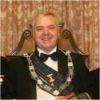
Kenneth C. Jack FPS is an enthusiastic Masonic researcher/writer from Highland Perthshire in Scotland.
He is Past Master of a Craft Lodge, Past First Principal of a Royal Arch Chapter, Past Most-Wise Sovereign of a Sovereign Chapter of Princes Rose Croix.
He has been extensively published in various Masonic periodicals throughout the world including: The Ashlar, The Square, The Scottish Rite Journal, Masonic Magazine, Philalethes Journal, and the annual transactions of various Masonic bodies.
Kenneth is a Fellow of the Philalethes Society, a highly prestigious Masonic research body based in the USA.

The Real History of the Rosicrucians
By: Arthur Edward Waite
Does the secret order known as the Rosicrucians even exist? Though fabled for centuries as clandestine movers and shakers of European and world events-alongside the Knights Templar and the Freemasons-evidence for its authenticity is shaky.
But that doesn’t mean that later organizations haven’t claimed the name, or that libraries of words haven’t been written about them.
Waite, a preeminent 19th-century expert in esoterica, here surveys all the literature necessary for understanding the roots of the Rosicrucians, whether they are real or fantasy.
This volume, first published in 1887, includes translations of the 17th-century German documents at the foundation of the story of the Rosicrucians as well as a comprehensive survey of literature about the Rosicrucians.
Students of secret societies and European history and literature will be enthralled. American-born British occultist and author ARTHUR EDWARD WAITE (1857-1942) was co creator of the famous 1910 Rider-Waite Tarot deck.
Among his numerous books are Book of Ceremonial Magic, The Holy Kabbalah, and New Encyclopedia of Freemasonry.
Recent Articles: Kenneth C. Jack
 Observations on the History of Masonic Research Archaeology is often associated with uncovering ancient tombs and fossilized remains, but it goes beyond that. In a Masonic context, archaeology can be used to study and analyze the material culture of Freemasonry, providing insight into its history and development. This article will explore the emergence and evolution of Masonic research, shedding light on the challenges faced by this ancient society in the modern world. |
 Anthony O'Neal Haye – Freemason, Poet, Author and Magus Discover the untold story of Anthony O’Neal Haye, a revered Scottish Freemason and Poet Laureate of Lodge Canongate Kilwinning No. 2 in Edinburgh. Beyond his Masonic achievements, Haye was a prolific author, delving deep into the history of the Knights Templar and leaving an indelible mark on Scottish Freemasonry. Dive into the life of a man who, despite his humble beginnings, rose to prominence in both Masonic and literary circles, leaving a legacy that continues to inspire. |
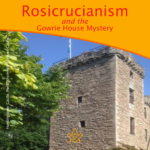 Rosicrucianism and the Gowrie House Mystery Unearth the mystifying intersections of Rosicrucianism and the infamous Gowrie House Mystery. Dive into speculative claims of sacred knowledge, royal theft, and a Masonic conspiracy, harking back to a fateful day in 1600. As we delve into this enthralling enigma, we challenge everything you thought you knew about this historical thriller. A paper by Kenneth Jack |
 Thomas Telford's Masonic Bridge of Dunkeld Of course, there is no such thing as a ‘Masonic Bridge’; but if any bridge is deserving of such an epithet, then the Bridge of Dunkeld is surely it. Designed by Scotsman Thomas Telford, one of the most famous Freemasons in history. |
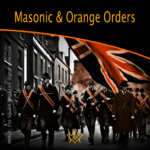 The masonic and orange orders: fraternal twins or public misperception? “Who’s the Mason in the black?” |
 Kenneth Jack's research reveals James Murray, 2nd Duke of Atholl – the 'lost Grand Master' |
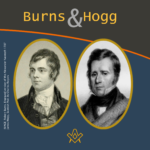 An Oration delivered to the Annual Burns and Hogg Festival, at Lodge Canongate Kilwinning, No. 2, Edinburgh, on 24 January 2018. By Bro. Kenneth C. Jack, FSAScot FPS, Past Master, Lodge St. Andrew, No. 814, Pitlochry. |
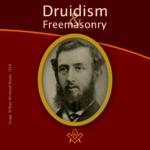 William Winwood Reade was a Scottish philosopher, historian, anthropologist, and explorer born in Crieff, Perthshire, Scotland. The following article by Kenneth Jack, provides some hints that William may have been a Freemason, but there is presently no definitive evidence he was. |
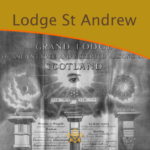 What's in a name? A brief history of the first Scottish Lodge in Australia - By Brother Kenneth C. Jack, Past Master, Lodge St. Andrew, No. 814, Pitlochry |
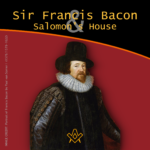 Sir Francis Bacon and Salomon’s House Does Sir Francis Bacon's book "The New Atlantis" indicate that he was a Rosicrucian, and most likely a Freemason too? Article by Kenneth Jack |
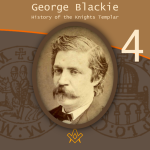 George Blackie – The History of the Knights Templar P.4 The final part in the serialisation of George Blackie's 'History of the Knights Templar and the Sublime Teachings of the Order' transcribed by Kenneth Jack. |
 George Blackie – The History of the Knights Templar P.3 Third part in the serialisation of George Blackie's 'History of the Knights Templar and the Sublime Teachings of the Order' transcribed by Kenneth Jack. |
 George Blackie – The History of the Knights Templar P.2 Second part in the serialisation of George Blackie's 'History of the Knights Templar and the Sublime Teachings of the Order' transcribed by Kenneth Jack. |
 George Blackie – The History of the Knights Templar P.1 First part in the serialisation of George Blackie's History of the Knights Templar and the Sublime Teachings of the Order – by Kenneth Jack |
 Little known as a Freemason, Bro Dr Robert ‘The Bulldog’ Irvine remains a Scottish rugby legend, and his feat of appearing in 10 consecutive international matches against England has only been surpassed once in 140 years by Sandy Carmichael. |
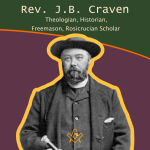 Rev. J.B. Craven: Theologian, Historian, Freemason, And Rosicrucian Scholar Archdeacon James Brown Craven is one of those unsung heroes of Scottish Freemasonry about whom very little has been previously written – here Kenneth Jack explores the life and works of this remarkable esoteric Christian. |
 Discover the powerful family of William Schaw, known as the 'Father of Freemasonry' |
 This month, Kenneth Jack invites us to look at the life of Sir William Peck; - astronomer, Freemason and inventor of the world's first electric car. A truly fascinating life story. |
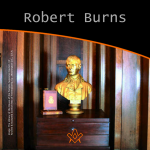 A Tribute to Scotland's Bard – The William Robertson Smith Collection With Burns' Night approaching, we pay tribute to Scotland's most famous Bard – The William Robertson Smith Collection |
 The Joy of Masonic Book Collecting Book purchasing and collecting is a great joy in its own right, but when a little extra something reveals itself on purchase; particularly with regards to older, rarer titles.. |
 Masons, Magus', and Monks of St Giles - who were the Birrell family of Scottish Freemasonry? |
 The 6th Duke of Atholl - Chieftain, Grand Master, and a Memorial to Remember In 1865, why did over 500 Scottish Freemasons climb a hill in Perthshire carrying working tools, corn, oil and wine? Author Kenneth Jack retraces their steps, and reveals all. |
 Charles Mackay: Freemason, Journalist, Writer Kenneth Jack looks at life of Bro Charles Mackay: Freemason, Journalist, Writer, Poet; and Author of ‘Tubal Cain’. |
 A Mother Lodge and a Connection Uncovered, a claim that Sir Robert Moray was the first speculative Freemason to be initiated on English soil. |
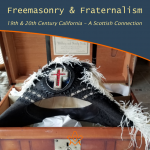 What is it that connects a very old, well-known Crieff family, with a former President of the United States of America? |
 The life of Bro. Cattanach, a theosophist occultist and Scottish Freemason |
 The Mysterious Walled Garden of Edzell Castle Explore the mysterious walled garden steeped in Freemasonry, Rosicrucianism, and Hermeticism. |
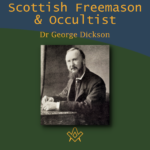 Dr. George Dickson: Scottish Freemason and Occultist Bro. Kenneth explores the life of Dr George Dickson a Scottish Freemason and Occultist |
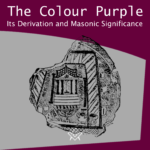 The Colour Purple - Its Derivation and Masonic Significance What is the colour purple with regards to Freemasonry? The colour is certainly significant within the Royal Arch series of degrees being emblematical of Union. |
 Bridging the Mainstream and the Fringe Edward MacBean bridging mainstream Freemasonry with the fringe esoteric branches of Freemasonry |
 Freemasonry in the Works of John Steinbeck We examine Freemasonry in the Works of John Steinbeck |
 Renegade Scottish Freemason - John Crombie Who was John Crombie and why was he a 'renegade'? |
 Scottish Witchcraft And The Third Degree How is Witchcraft connected to the Scottish Third Degree |
masonic knowledge
to be a better citizen of the world
share the square with two brothers

click image to open email app on mobile device


